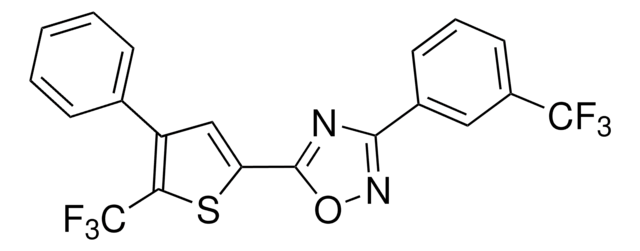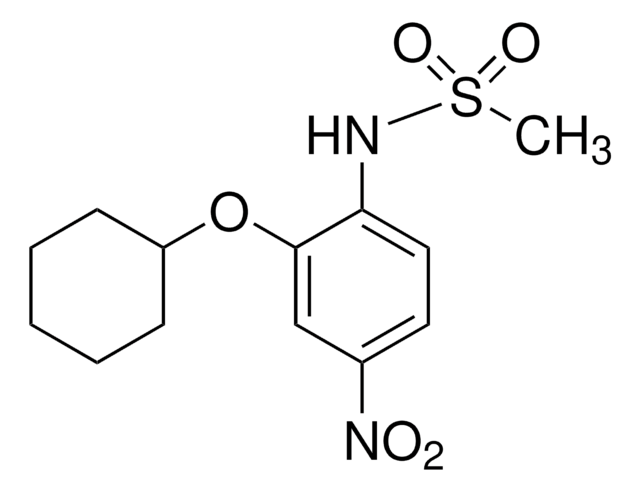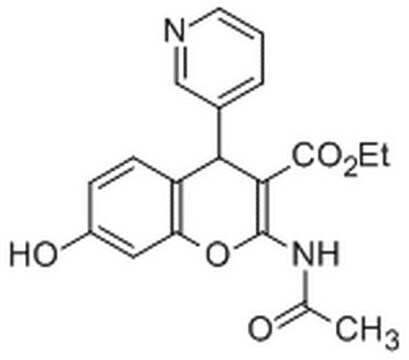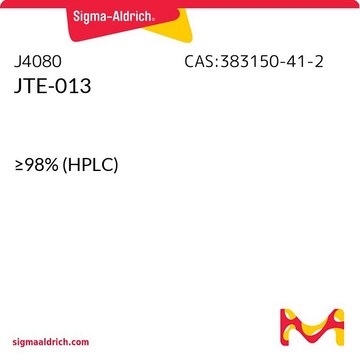Kluczowe dokumenty
SML2499
TY-52156
≥98% (HPLC)
Synonim(y):
1-(4-Chlorophenylamino)-1-(4-chlorophenylhydrazono)-3,3-dimethyl-2-butanone, 1-(4-Chlorophenylhydrazono)-1-(4-chlorophenylamino)-3,3-dimethyl-2-butanone, N-(4-Chloroanilino)-N′-(4-chlorophenyl)-3,3-dimethyl-2-oxobutanimidamide, TY 52156, TY52156
About This Item
Polecane produkty
Próba
≥98% (HPLC)
Formularz
powder
kolor
white to very dark brown
rozpuszczalność
DMSO: 2 mg/mL, clear
temp. przechowywania
2-8°C
ciąg SMILES
CC(C)(C(/C(NC1=CC=C(C=C1)Cl)=N/NC2=CC=C(C=C2)Cl)=O)C
InChI
1S/C18H19Cl2N3O/c1-18(2,3)16(24)17(21-14-8-4-12(19)5-9-14)23-22-15-10-6-13(20)7-11-15/h4-11,22H,1-3H3,(H,21,23)
Klucz InChI
XONRRGIRSGNWFP-UHFFFAOYSA-N
Działania biochem./fizjol.
Kod klasy składowania
11 - Combustible Solids
Klasa zagrożenia wodnego (WGK)
WGK 3
Temperatura zapłonu (°F)
Not applicable
Temperatura zapłonu (°C)
Not applicable
Wybierz jedną z najnowszych wersji:
Certyfikaty analizy (CoA)
Przepraszamy, ale COA dla tego produktu nie jest aktualnie dostępny online.
Proszę o kontakt, jeśli potrzebna jest pomoc Obsługa Klienta
Masz już ten produkt?
Dokumenty związane z niedawno zakupionymi produktami zostały zamieszczone w Bibliotece dokumentów.
Nasz zespół naukowców ma doświadczenie we wszystkich obszarach badań, w tym w naukach przyrodniczych, materiałoznawstwie, syntezie chemicznej, chromatografii, analityce i wielu innych dziedzinach.
Skontaktuj się z zespołem ds. pomocy technicznej








